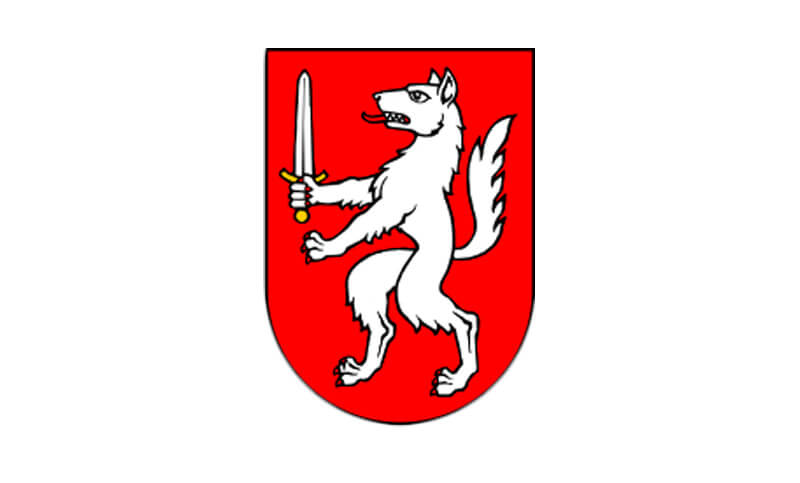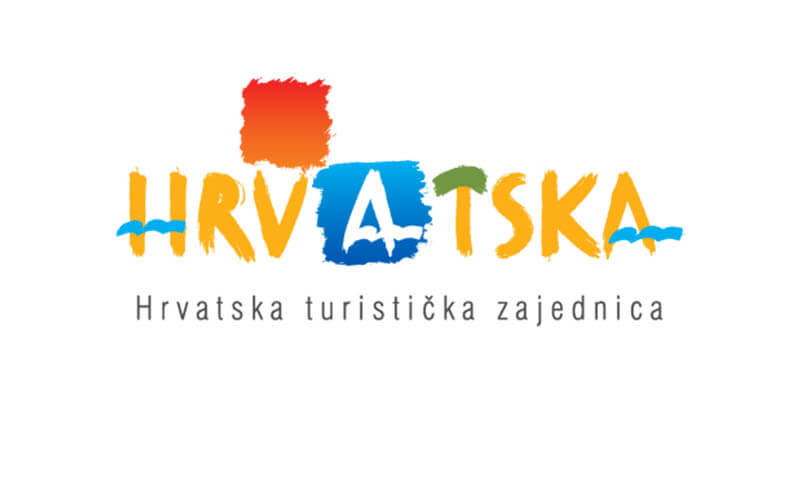Famous citizens
Nikola Tesla
Nikola Tesla (born in Smiljan in 1856, and died in New York in 1943) was one of the greatest inventors of the 20th century. He was born in Lika, attended elementary and grammar school in Smiljan, Gospić and Karlovac, and studied in Graz, Austria.
His inventions in electrical engineering and discoveries in physics not only left a deep mark on science, but also improved the quality of life in general, which is why he earned the title of “the man who invented the 20th century”. He invented, among other things, the alternating current generator, which is the foundation of modern-day power engineering. While his colleague Thomas Alva Edison advocated the use of direct current, Tesla invented the polyphase system and the transformer, enabling the cheap transmission of high-voltage electricity over great distances, and thus its widespread use.
He is considered to be the father of the radio, although during his lifetime, this honor had been awarded to Marconi. The US Supreme Court righted this wrong in 1943, ruling that Tesla was the true radio pioneer, but despite Tesla’s obtaining this satisfaction, Marconi is still often credited with inventing the radio. He considered the invention of radio communication to be one of his greatest inventions. He also worked on wireless energy transmission (his last large project was the construction of a gigantic tower on Long Island), he discovered X-rays and the electron, and through his inventions, he was the predecessors of modern weapons, such as cruise missiles, as well as the Internet, because as far as a hundred years ago, he had promoted the idea of “a global system for connecting communications into a global system”. He left behind more than 700 patents, and many of his inventions are still shrouded in secrecy. The man who blazed the trail for the technological development of the modern age died in New York, without any public recognition, somewhat forgotten and alone. The injustice done to this “electric wizard” is evidenced by the fact that as many as three Nobel prizes have been given for inventions pioneered by Tesla: J. J. Thompson was awarded the prize for discovering the electron, W. Röntgen for discovering X-rays, and G. Marconi for inventing the radio. In the last several decades, however, Tesla has become a sort of a scientific icon. The unit of measurement of magnetic induction has been named the tesla, while more recently, an electric car brand has also been named after him. Another interesting fact is that Tesla was fluent in eight languages.
Miroslav Kraljević
Miroslav Kraljević rođen je 14. studenog 1885. godine u Gospiću. Djetinstvo provodi u Zagrebu sve do sedmog razreda gimnazije (1888.-1902.). Zatim od 1902.-1904. provodi u Gospiću, gdje je završio srednju školu. Volio je poeziju i muziku, a četo su ga viđali da nešto crta. Nakon položene mature, mladi se Kraljević u jesen 1904. godine iz Gospića uputio u Beč. U Beču je pored prava privatno učio slikanje kod prof. Georga Fischhofa. Poslije dvije godine prekinuo je sa studijem prava. U jesen 1906. Kraljević kreće u München, te dva semestra polazi privatnu školu prof. Moritza Heymanna, poznatog izvanredno iskusnog grafičara. Nakon sedam mjeseci boravka u Münchenu, tamo 1907. upisuje Akademiju likovnih umjetnosti i postaje đak prof. Huga Habermanna (osim Kraljevića u njegovoj su klasi, bili Račić i Becić).
Nakon četiri godine, po završetku studija u Münchenu, Kraljević se vraća u Požegu, u kojoj će provesti čitavu 1910. i dobar dio 1911. U tom periodu nastaje slika Autoportret sa psom, te mnoga druga njegova remek-djela. Tih se godina također vraća svojoj ljubavi iz mlađih dana – plastici.
1911. dobiva državnu stipendiju za usavršavanje u Parizu. Forme radi upisuje akademiju La Grande Chaumiére koju vrlo brzo napušta. U Parizu susreće nekoliko svojih prijatelja i počinje intenzivno slikati u njihovim ateljeima. Ovdje je Kraljevićev genij vrlo brzo došao do izražaja, te postaje suradnik časopisa Panurge oko kojeg se okupljala tadašnja pariška elita. Upravo u Parizu, usprkos uznapredovaloj bolesti, Kraljević je napravio svoja najvrijednija djela, te čitav niz neponovljivih crteža sa motivima pariškog života. Nakon više od godinu dana intenzivnog rada, Kraljević napušta Paris, odakle je otišao s mnoštvom slika i crteža.
U jesen 1912. vraća se u Zagreb, gdje priređuje prvu samostalnu izložbu, koja je imala retrospektivni karakter. Unajmljuje bivši atelje Roberta Auera na Rokovom perivoju, gdje je nastavio slikati do 12. veljače 1913. Tada odlazi na lječenje bolnicu za plućne bolesti na Berstovcu. Dva mjeseca nakon toga, 14. travnja, vratio se iz bolnice u Zagreb, gdje je poslje dva dana umro.
Miroslav Kraljević umro je 16. travnja 1913. godine u Zagrebu.
Dr. Ante Starčević
Ante Starčević (23 May 1823 – 28 February 1896) is without a doubt one of the greatest and most accomplished individuals in Croatian political history, and we have recently celebrated the 110th anniversary of the death of this man who is rightfully called the Father of our Homeland.
Born in the village of Veliki Žitnik in Lika, his family taught him to love his homeland with his whole heart even as a child. Ante’s father, Jakov Starčević, was the youngest son of the Žitnik prince Filip, and was a man of rare spirit, passion, and deep emotion, but also wisdom and humor, which was loved by everyone in Žitnik. Jakov wedded Milica from the Orthodox family Bogdan from Široka Kula, a small village northeast of Gospić. In the old, poor house of the Starčević family, Jakov and Milica had Ante, his brother Jandro, and two daughters.
Ante was a tall, dark man, with manly features, thick black hair, and dark eyes. Just like all children in Lika, he spent his childhood barefoot, poorly dressed, and was used to poverty since childhood, which left deep marks on both his body and his soul. This was the source of his sickly nature, which especially afflicted him through school and young adulthood. Just as he inherited his mothers physique, he inherited many mental features from his father, most of all his sense of humor and intellect.
In the Starčević home, the rules of tradition were adhered to strictly, and so Ante learned to love his country early; he loved it deeply and often spoke of it as of a beloved woman, with passion and fidelity. Thus, the frame of Ante Starčević’s character had already been formed in Žitnik. When he was 13, he moved to Karlobag with his uncle Šime; there, his uncle passed on his political views and a sense for the vernacular, a respect for its archaisms and a resistance to novelty. In Karlobag, he shaped his language to a higher degree than his uncle’s, and developed an affinity for literature. His uncle also taught him the first broad concepts regarding his nation, its aspirations, its enemies, concepts such as natural law, a sense of bygone times, and those who were cheating it out of its rights. In Karlobag, therefore, Ante fully formed his political views, to which he would stay true over the entire course of his life. Uncle Šime had seen that Ante was a very intelligent child, to whom he would easily impart his understanding of the nation and its facets.
Šime, who was already quite old, soon sent Ante to stay with his friend Joso Vlatković (a pastor in Smiljan) for further education. In Karlobag and Smiljan, Ante learned Latin, arithmetic, geography and natural science, and acquired the curriculum for the first two years of grammar school. This private education lasted for three years, and in the autumn of 1839, Ante—then 16 years old—went to Zagreb to continue his grammar school education.
The period of the 1848-1849 revolutions, both across the world and in Croatia, was a formative experience for Starčević, fully shaping his personality and determining his course in life and work. He criticized the actions of the leaders of the Croatian revolutions, and even thought badly of them because he believed them to be servants of Austria (e.g. ban Josip Jelačić).
He became disillusioned with the Croatian national revival due to its failure to achieve real autonomy for Croatia and to sufficiently awaken the national consciousness of Croats. He was deeply hurt by the injustice done to Croatia with the introduction of the Octroic constitution and the neo-absolutism of Franz Joseph I in 1849. Ante Starčević always had the idea of uniting all Croatian lands, and to him, this was a “sacred cause”. He advocated the idea that Croatia could only attain independence through the emperor fulfilling his rights and duties to the nation to which he was accountable…







